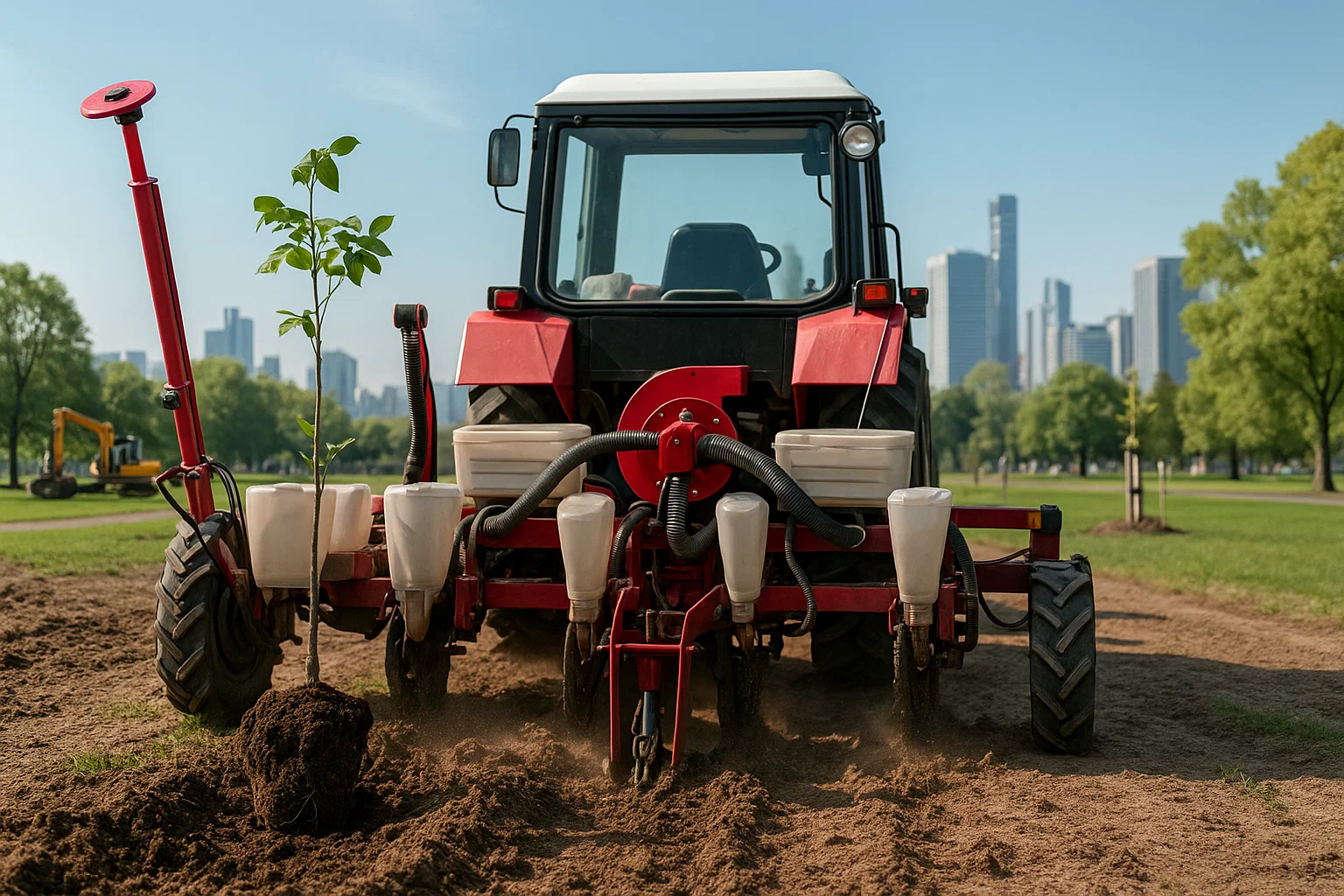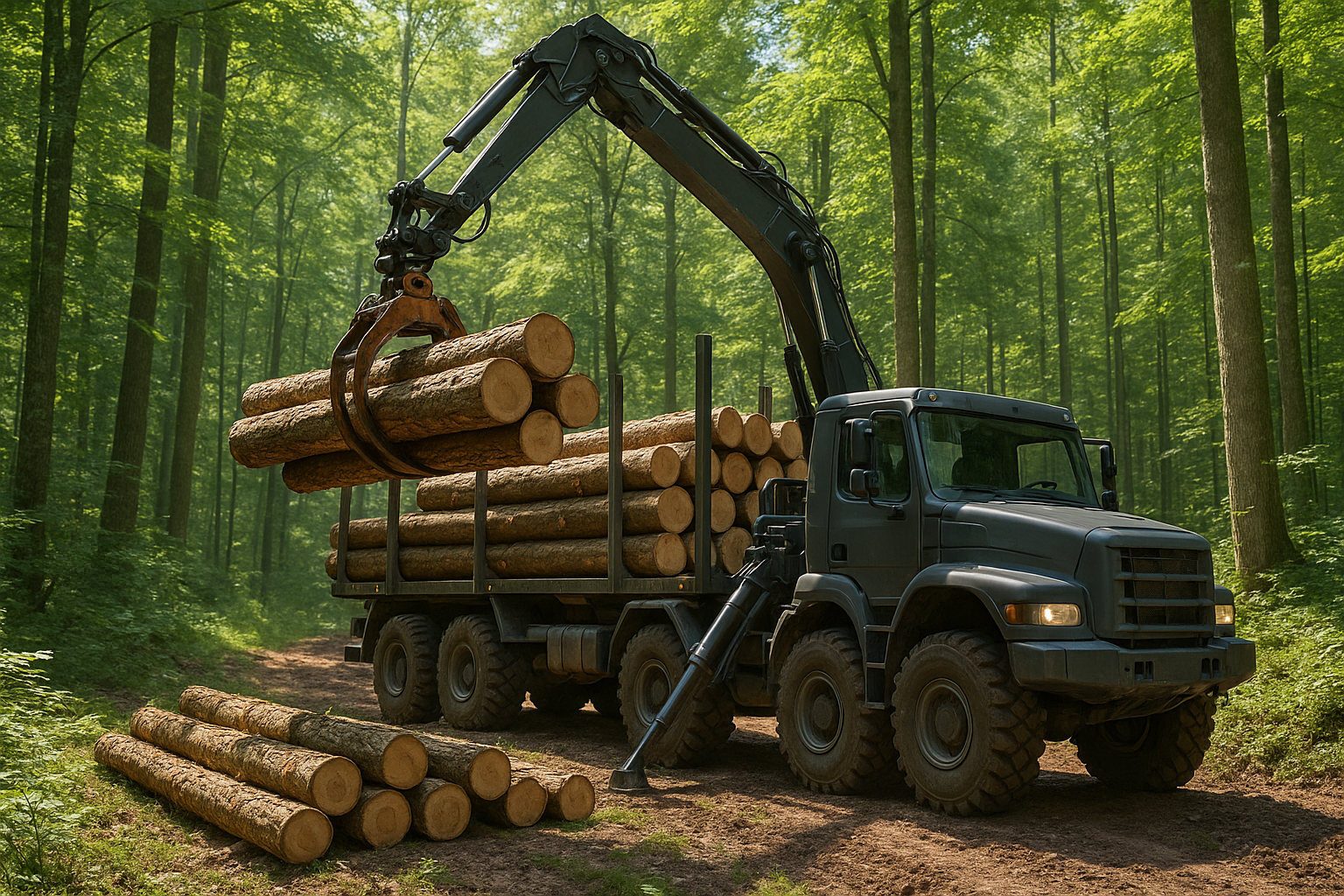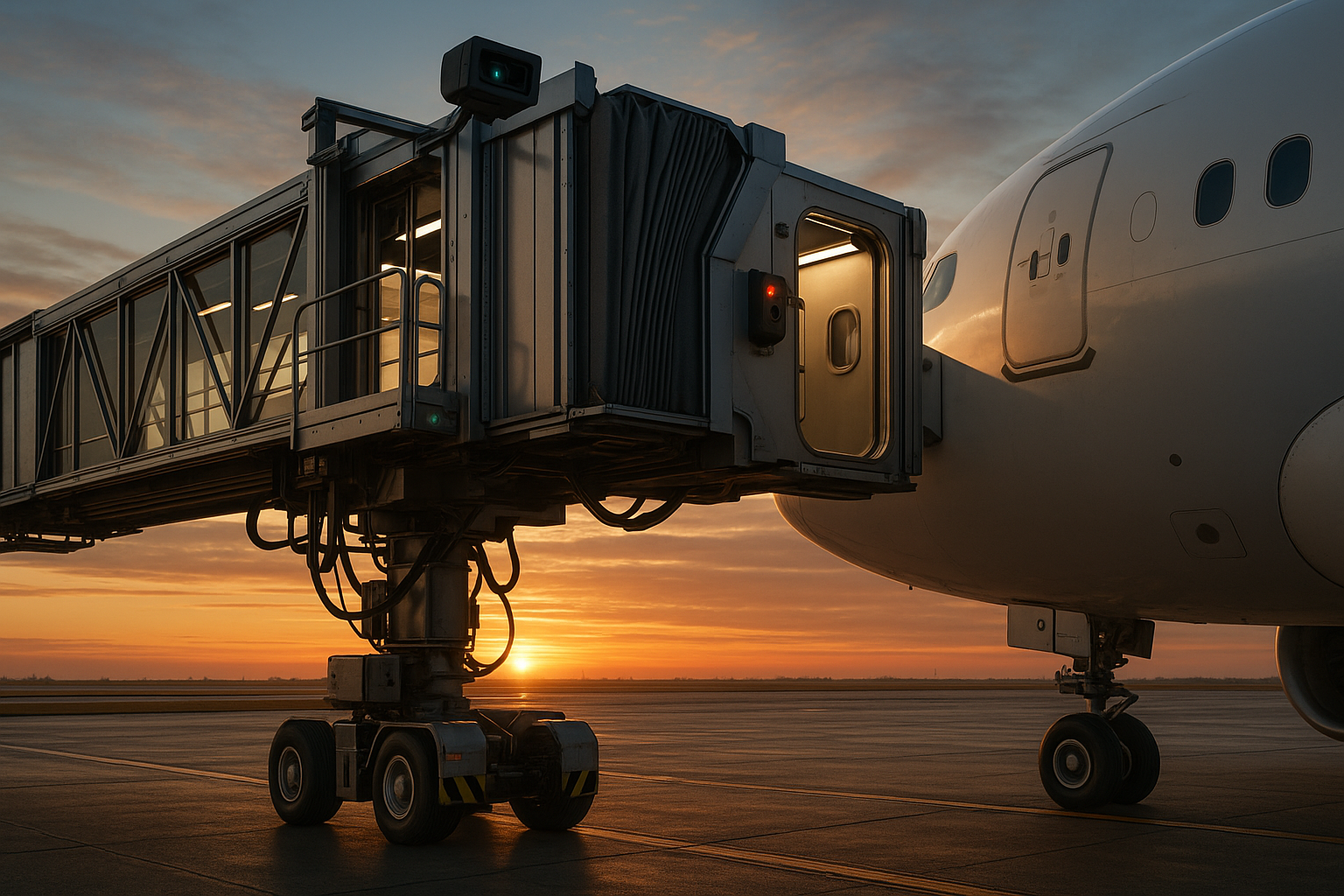
Semi-Autonomous Tree Planter Powered by Neousys Edge AI

Introduction
Urban environments worldwide are rapidly expanding, leaving fewer green spaces in their wake. Governments and city councils are now prioritizing large-scale reforestation and park redevelopment to restore balance. However, the process of planting trees across dense city layouts and suburban areas remains labor-intensive and costly.
To address this, a robotics development team designed a semi-autonomous tree planter capable of both remote teleoperation and automated planting. The goal was to simplify and accelerate urban tree-planting while reducing human labor and safety risks.
Traditional planting machines are bulky and require multiple operators. In contrast, this smaller, edge-AI-powered tree planter brings agility and precision into compact spaces. By integrating real-time sensors, cameras, and robotic arms, it enables precise planting motions—even in uneven terrain.
Yet, during early prototypes, the team faced multiple technical barriers. High field temperatures caused CPU throttling, leading to sluggish performance. Wireless modules overheated and lost signal. Frequent vibrations caused loose cable connections. And the system lacked sufficient I/O for all the sensors and LiDARs needed for reliable AI navigation.
That’s when they turned to Neousys, a leader in rugged edge computing, to provide a stable, high-performance computing platform that could endure the toughest outdoor environments.
Problem Identification
Deploying a semi-autonomous machine outdoors is far from simple. The customer’s initial trials revealed three critical challenges that limited performance and reliability:
- Thermal throttling under direct sunlight – Competing systems overheated during field tests. The CPU’s temperature exceeded 50°C, forcing it to throttle and severely degrade performance. Remote-control latency and unstable communication worsened under heat load.
- Loose and unstable cable connections – Constant vibration from vehicle motion and robotic arm movement caused connectors to loosen. These small disconnections led to camera signal loss and communication interruptions.
- Limited connectivity for sensors and actuators – The prototype required multiple high-speed interfaces for cameras, LiDARs, sensors, and control modules. Their existing system lacked sufficient ports and struggled to deliver consistent computing power for AI inference and motion control simultaneously.
These issues made continuous operation unreliable—posing a barrier to scaling automation across large greening projects.
Solution Implementation
The team selected Neousys’ rugged edge AI platform, designed specifically for outdoor, high-performance, and vibration-prone environments.
- High-performance AI inference: Powered by an NVIDIA RTX GPU, the Neousys system handled real-time vision and AI decision-making, allowing the robot to analyze terrain and position each sapling with precision.
- Wide-temperature operation: With an operating range up to 60°C, the system maintained stable performance under sunlight without thermal throttling—thanks to Neousys’ advanced passive cooling design.
- Secure connectivity: Multiple GigE, PoE+, and USB 3.2 Gen1 ports supported the entire network of cameras, sensors, and LiDARs. Screw-lock connectors ensured no disconnections under constant vibration.
- Reliable communication: Internal expansion slots supported Wi-Fi 6, 4G, and 5G modules, enabling seamless teleoperation and live monitoring.
- Rugged GPU bracket: Neousys’ patented design secured the RTX GPU during vehicle deployment, preventing mechanical stress or displacement during operation.
Once integrated, the new edge platform transformed the system’s performance and stability in real field tests.
Results
After deploying the Neousys edge AI system, the customer achieved:
- Consistent AI inference performance, even under direct sunlight and high temperatures
- Improved uptime with zero cable disconnections during long field operations
- Real-time remote teleoperation without signal delay or module overheating
- Higher planting throughput, enabling multiple units to operate simultaneously in city greening projects
The upgraded system delivered stability, responsiveness, and safety—reducing the need for human operators and speeding up the planting process across large urban areas.
Conclusion
By integrating Neousys edge AI computing into their semi-autonomous tree planter, the customer achieved stable, real-time AI operation under harsh outdoor conditions. The rugged design, secure cabling, and wide-temperature performance ensured continuous uptime and reliability.
This collaboration showcases how Neousys empower innovators in robotics, automation, and smart-city development—turning environmental goals into practical, scalable solutions.
Contact Neteon to learn how we can help you bring industrial automation from concept to reality.
Industrial IoT

Start your journey with Neteon!
Discover how our solutions can transform your business.
One click is all it takes.











